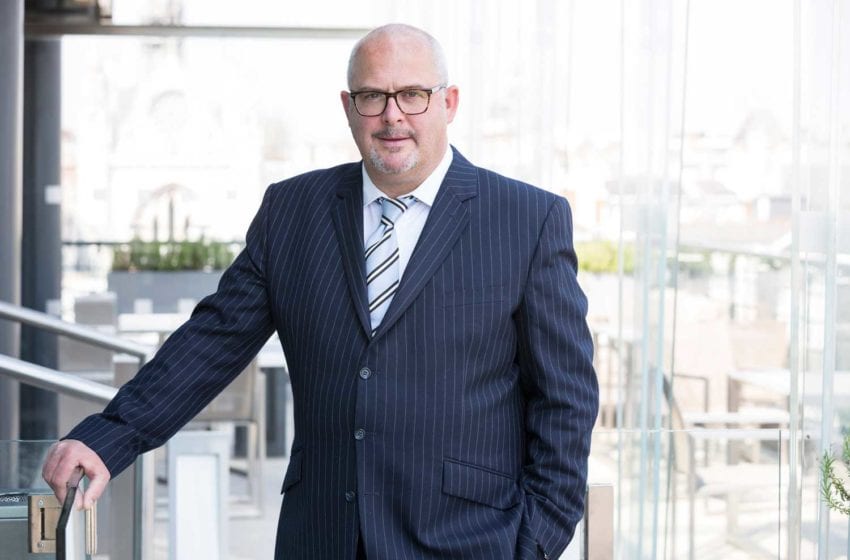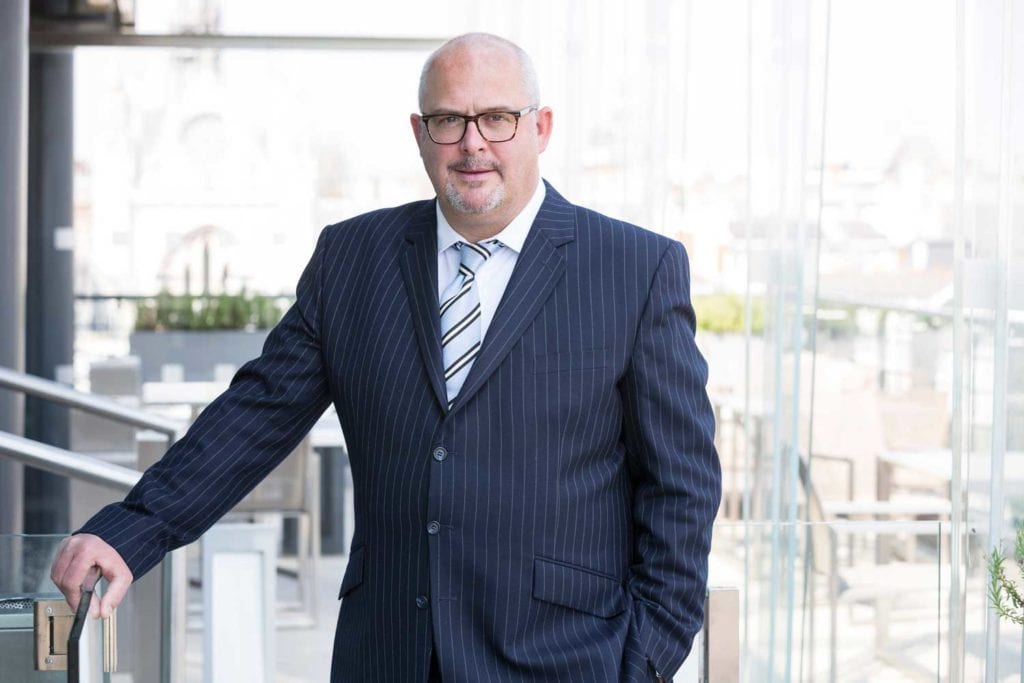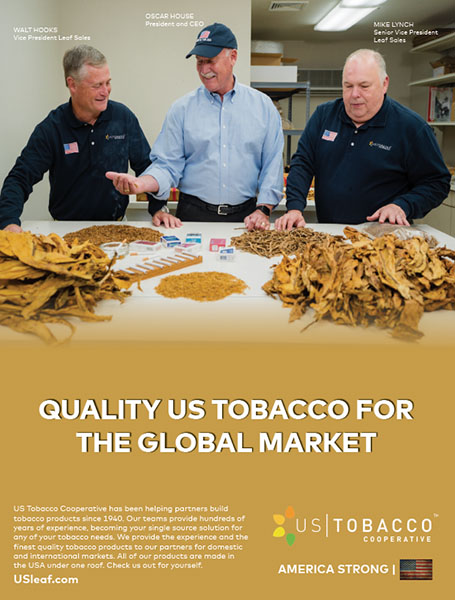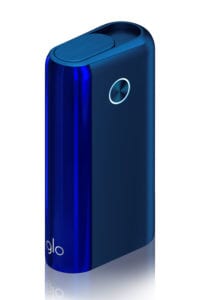A New Dawn
- Also in TR Business Print Edition
- May 1, 2021
- 0
- 0
- 14 minutes read


BAT is keen to build “a better tomorrow.” Chief Marketing Officer Kingsley Wheaton explains what that entails.
By George Gay
I believe that Oscar Wilde, a man of fashion, once described fashion as “a form of ugliness so absolutely unbearable that we have to alter it every six months.” So I wonder whether he, as a fashionable smoker, would have supported altering the cigarette every six months, given he had known it posed an absolutely unbearable risk.
I think he would have done so. He was a risk-taker, but he was also highly intelligent, and there comes a time when intelligent people, even risk takers, have to yield to reality. Time caught up with the tobacco industry years ago, and, during the past decade or so, it has been changing in the light of what to most people is smoking’s unacceptable risk. These changes have included offering consumers a burgeoning range of increasingly viable lower risk alternatives to combustible cigarettes, which, rather than appearing every six months, have been launched as a steady stream of innovative products that, yes, up to a point, are dictated by consumer-led fashion.
Appropriately, Wilde talked of altering fashion while the tobacco industry talks usually of change. But there is a new word on the block: “transformation,” which seems to describe a more muscular form of change—one that is not just about the market but about the companies supplying the market and the consumers buying from the market. BAT is one company involved in transformation and, in April, Tobacco Reporter asked it what form this transformation was taking.
“BAT has a clear purpose—to build ‘A Better Tomorrow’—by reducing the health impact of our business through offering a greater choice of enjoyable and less risky products,*” said Kingsley Wheaton, chief marketing officer, in an emailed reply. “We aim to generate an increasingly greater proportion of our revenues from products other than combustibles, and we are targeting £5 billion [$6.97 billion] New Category revenue by 2025. We aim to have 50 million consumers of our noncombustible products by 2030, and today, already 13.5 million consumers choose these products …
“We have the broadest New Categories portfolio in the industry, comprising vaping devices, tobacco-heating [products] and modern oral nicotine products. Our multicategory portfolio offers innovative consumer products that have been developed using cutting-edge technology and science. We are building the brands of the future.
“From launching our first vaping device in the U.K. in 2013, our vaping products are now available in 27 countries. In total, our New Category brands are available in more than 50 countries around the world.
“We have come a long way, and our transformation continues to accelerate. We are building new capabilities around the world focused on science, innovation and digital technologies. Consumer preferences and technology are evolving rapidly, and we are staying ahead of the curve with our digital hubs, the creation of innovation super centers and further development of our world-class R&D laboratories. We are also leveraging the expertise of our external partners and are looking forward to exciting results from our venturing initiative BTomorrowVentures.
“In December 2020, we also announced we had progressed our Covid-19 and seasonal flu vaccine candidates into human trials—a significant milestone that further demonstrates our commitment to innovation and science.”

Endpoints
It would be easy to dismiss the above reply from BAT as the sort of polished promotional prose you would expect from a multinational, and I’m certain some people will do so. But if this is your reaction, it is worth reading it again because the breadth of the transformation cannot be denied, even if you don’t like the direction of travel. As BAT pointed out, it started life in 1902 and, for more than 100 years, had a product portfolio comprising more or less only cigarettes, which themselves comprised mainly a processed plant. Now it is describing how it is harnessing science, digital technologies and innovation super centers to produce a range of new category products that will change the market and consumer habits significantly within a targeted time. And let’s not forget the vaccine trials, which are impressive in themselves, but which hint at scientific developments that might provide important cross-fertilizations.
One interesting question that arises when considering the transformation of a company has to do with whether there comes a point at which the transformation is complete, or whether it is a continuing process without any readily identifiable endpoint.
“From the start of our portfolio transformation journey, we have always been clear that no consumer is the same,” said Wheaton. “In order to meet differing needs in multiple marketplaces, a portfolio of suitable alternatives is required—that is the hallmark of a modern consumer products business. It’s about understanding consumer preferences and how the marketplace is evolving.
“We are transforming from a company that defines itself by the product that we sell to the consumer needs that we meet. We are committed to driving a step change in our New Category business while also innovating new product areas that go ‘beyond nicotine.’
“We recently entered a strategic R&D collaboration with Organigram, a leading Canadian cannabis licensed producer. This agreement augments our activities to expand our portfolio ‘beyond nicotine’ and follows the pilot launch of our first CBD vaping product, Vuse CBD Zone, in Manchester, U.K., earlier this year.”

The Shifting Regulatory Landscape
Given the stated individuality of consumers and their inevitable turnover, it would seem that transformation will be a continuing business, especially since there is another significant variable in the equation: shifting regulatory landscapes. And at this point, the question arises as to how a multinational company can navigate regulations in a world where countries operate with different—sometimes vastly different—regulations in respect of tobacco and new-generation products.
“The regulatory environment around tobacco harm reduction is evolving,” said Wheaton. “Science increasingly points to the reduced-risk* nature of our New Category tobacco and nicotine products as an alternative to smoking. This means we are seeing policy and regulatory shifts in several markets. Some countries have greater restrictions in place. Others, like the U.K., view tobacco harm reduction within a regulated framework, encouraging smokers to use potentially reduced-risk tobacco and nicotine products.
“We believe a stakeholder-inclusive, whole-of-society dialogue, which includes regulators, policy makers, consumers and the industry, is key to developing effective policies that can accelerate tobacco harm reduction as fast as possible.
“We also believe that accelerating progress toward more effective tobacco harm reduction policies needs an evidence-based approach; proportionate regulation; freedom to innovate; engagement, dialogue and communication; and responsible marketing freedoms.
“Underpinning all of this is our ethos: It is about being bold, fast, empowered, responsible and diverse to create a future-fit culture at BAT.”
Dropping the Pods
 Although change is always put forward as a positive by those bringing it in, it doesn’t take more than a second’s thought to realize this is not necessarily the case. And the same could be said about transformation, so Tobacco Reporter asked whether BAT was concerned the tobacco industry’s transformation to some new-generation products could be viewed as having negative consequences for the environment.
Although change is always put forward as a positive by those bringing it in, it doesn’t take more than a second’s thought to realize this is not necessarily the case. And the same could be said about transformation, so Tobacco Reporter asked whether BAT was concerned the tobacco industry’s transformation to some new-generation products could be viewed as having negative consequences for the environment.
As part of his reply, Wheaton said BAT’s group-wide circular economy strategy for all its product categories—including its New Categories portfolio—was guided by three strategic priorities:
- Simplifying the design of products to improve recyclability and reduce the use of virgin materials and resources;
- Maximizing the longevity of products to improve the experience for consumers; and
- Minimizing waste through increased product recovery and recycling.
“Responsible disposal of our New Category products is key to our approach,” he added.
“We have implemented ‘drop the pod’ pilot schemes in France, Mexico and the U.K. for consumers to return their e-liquid pods. In Japan, we have a scheme that allows consumers to return tobacco-heating devices. We aim to implement takeback schemes for our New Category devices, in all markets where they are sold, by [the] end of 2021.”
So it would seem that, as far as BAT is concerned, building a better tomorrow goes beyond addressing individual and societal health improvements. In answer to another question, Wheaton pointed out that the expectations of the broader society were that businesses should play a more active role in addressing and finding solutions to crucial social, economic and environmental issues. “At BAT, we welcome this shift, which is aligned to our company’s purpose and our ESG [environmental, social and corporate governance] agenda,” he said.
“Reducing the health impact of our business by encouraging those smokers who would otherwise continue to smoke to switch completely to scientifically substantiated reduced-risk alternatives* is the greatest contribution we can make to society. This means growing our New Category business and increasing the proportion of our revenue coming from New Category products as fast as possible.
“Our work to reduce the environmental impact of the business will also drive growth and create shared value, delivering results that simultaneously benefit shareholders and wider society.
“In support of our ‘A Better Tomorrow’ purpose, in 2020, we set three ambitious ESG targets: First, to increase the consumer base of our noncombustible products to 50 million by 2030; second, to become carbon neutral for emissions resulting from our own business by 2030 and accelerating our existing environmental targets to 2025; third, to eliminate unnecessary single-use plastic and make all plastic reusable, recyclable or compostable by 2025.”
There is a saying that you can lead a horse to water, but you cannot make it drink, so what, Tobacco Reporter asked, could BAT do if a hard core of smokers decided they did not share the company’s vision of a better tomorrow? Would it keep manufacturing traditional cigarettes for them, or would it stop supplying such cigarettes when a country’s smoking population dropped below 5 percent or some such figure?
“We are clear that cigarettes pose serious health risks,” said Wheaton. “The only way to avoid these risks is not to start or to quit. We encourage those who would otherwise continue to smoke to switch completely to scientifically substantiated reduced risk alternates.* Driving value from our combustible cigarette business is how we fuel our investment in, and transition revenue to, New Categories, so it will be an important part of our business for many years to come.
“Providing smokers with factual information, about, for example, vaping, is essential to enable them to make informed choices. We are committed to providing this information and have launched www.vapeexplained.com, a digital information hub providing adult smokers and vapers with science-informed answers to the vaping questions most commonly searched for online. VapeExplained.com is built on the company’s vast technical expertise of over 1,500 R&D specialists and the experiences of offering vaping products in over 26 countries around the world.”
That, of course, didn’t answer the question of how long BAT was willing to continue making combustible cigarettes for a diminishing consumer base, but an answer was hinted at in answers to the next questions, when Tobacco Reporter asked how the company would take with it on its transformation its commercial stakeholders, or, in the case of some stakeholders, such as tobacco growers, how it would help them transition to new, perhaps unrelated, activities.
“Also on this journey to a better tomorrow, we expect tobacco growers to remain central to our supply chain for many years to come, and farmer livelihoods is one of the priority areas of our sustainability agenda,” said Wheaton. “We are committed to helping our contracted farmers and their communities to grow and flourish. Farm diversification is just one example of this.
“Over 93 percent of our contracted farmers in our supply chain grow other crops alongside or in rotation with tobacco, ensuring they don’t rely on one crop. This has helped to increase their resilience as well as enhancing food security and preserving soil health. If there is a future impact on the overall demand for tobacco leaf, we have an established approach for working with impacted farmers to support a smooth transition into alternative agricultural livelihoods.”
*Based on the weight of evidence and assuming a complete switch from cigarette smoking. According to BAT, these products are not risk free and are addictive. “Our products as sold in the U.S., including Vuse, Velo, Grizzly, Kodiak and Camel Snus, are subject to FDA regulation, and no reduced-risk claims will be made as to these products without agency clearance,” the company points out.

